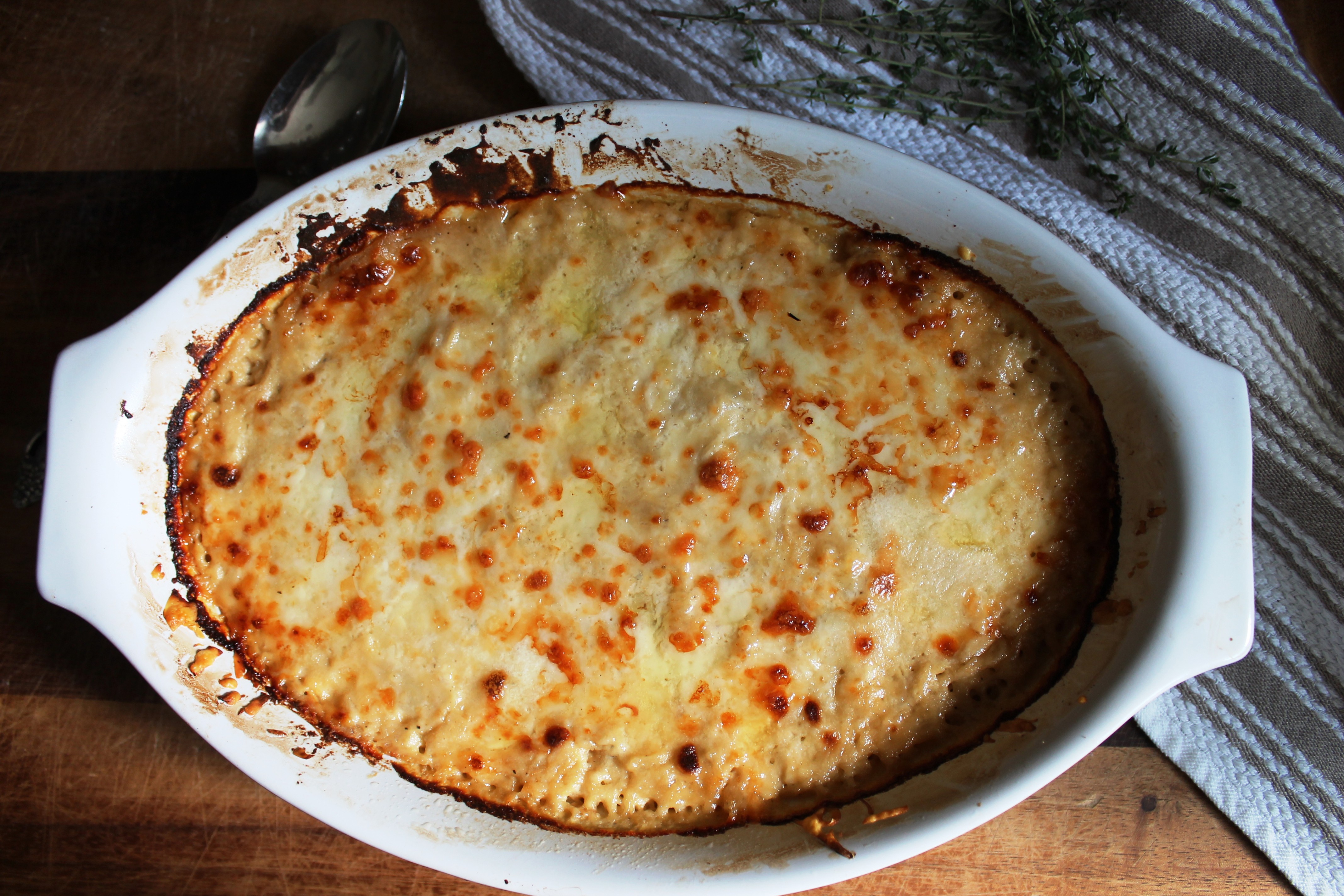 Continuing our little French-themed streak—which, given the name of this blog, should surprise exactly no one—we offer another recipe inspired by Anne Willan’s The Country Cooking of France. After the success and outright delectableness of the Snap Peas with Bacon and Onion (Oh, the brown butter of it all…) and the Goat Cheese Stuffed Tomatoes (Take that, boring cottage cheese!), we’ve become total acolytes of this fantastic recipe collection. (Just a heads up, there are about 250 recipes there, so we might be looking at a “Julie and Julia” situation.) This is a take on the classic Gratin Dauphinois that hales from the mountainous Dauphiné region of southeastern France. Marked by higher altitudes and cooler temperatures, the fare that originated there is understandably rich and warming. This particular dish—better known to North American diners as potatoes au gratin (or au gratin potatoes), scalloped potatoes, or simply a potato gratin—has taken on an almost iconic status that has gone far beyond its association with French alpine cuisine.
Continuing our little French-themed streak—which, given the name of this blog, should surprise exactly no one—we offer another recipe inspired by Anne Willan’s The Country Cooking of France. After the success and outright delectableness of the Snap Peas with Bacon and Onion (Oh, the brown butter of it all…) and the Goat Cheese Stuffed Tomatoes (Take that, boring cottage cheese!), we’ve become total acolytes of this fantastic recipe collection. (Just a heads up, there are about 250 recipes there, so we might be looking at a “Julie and Julia” situation.) This is a take on the classic Gratin Dauphinois that hales from the mountainous Dauphiné region of southeastern France. Marked by higher altitudes and cooler temperatures, the fare that originated there is understandably rich and warming. This particular dish—better known to North American diners as potatoes au gratin (or au gratin potatoes), scalloped potatoes, or simply a potato gratin—has taken on an almost iconic status that has gone far beyond its association with French alpine cuisine.
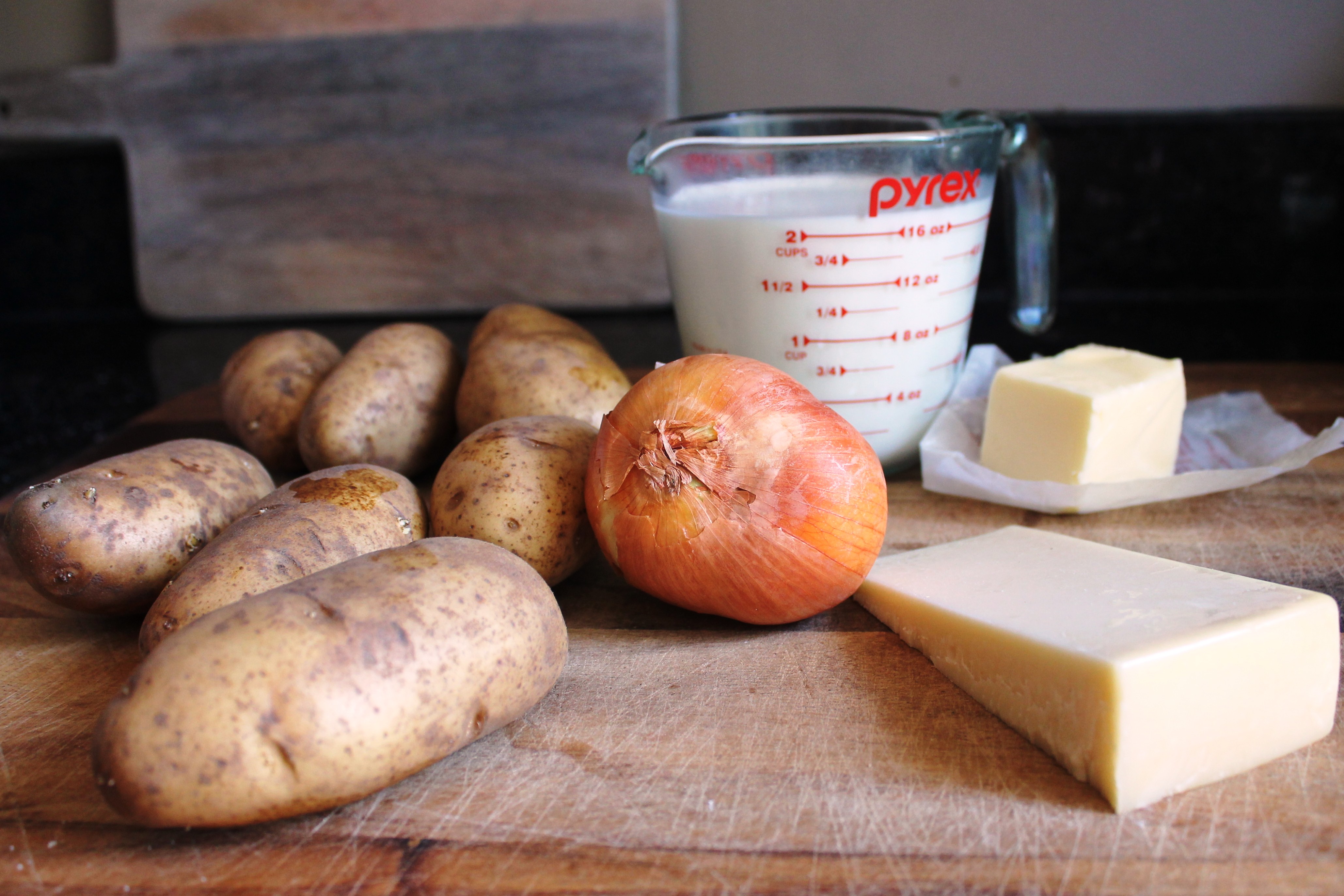 Betty Crocker featured a recipe for these potatoes in a cookbook back in the 1950s and even went on to offer a “more convenient” boxed version (We know, Ew.), which introduced the dish to countless American palates and cemented it into the firmament of childhood favorites for a generation or two after that. For our money though, there’s nothing quite like the real thing. Luckily, it’s gloriously easy to make.
Betty Crocker featured a recipe for these potatoes in a cookbook back in the 1950s and even went on to offer a “more convenient” boxed version (We know, Ew.), which introduced the dish to countless American palates and cemented it into the firmament of childhood favorites for a generation or two after that. For our money though, there’s nothing quite like the real thing. Luckily, it’s gloriously easy to make.
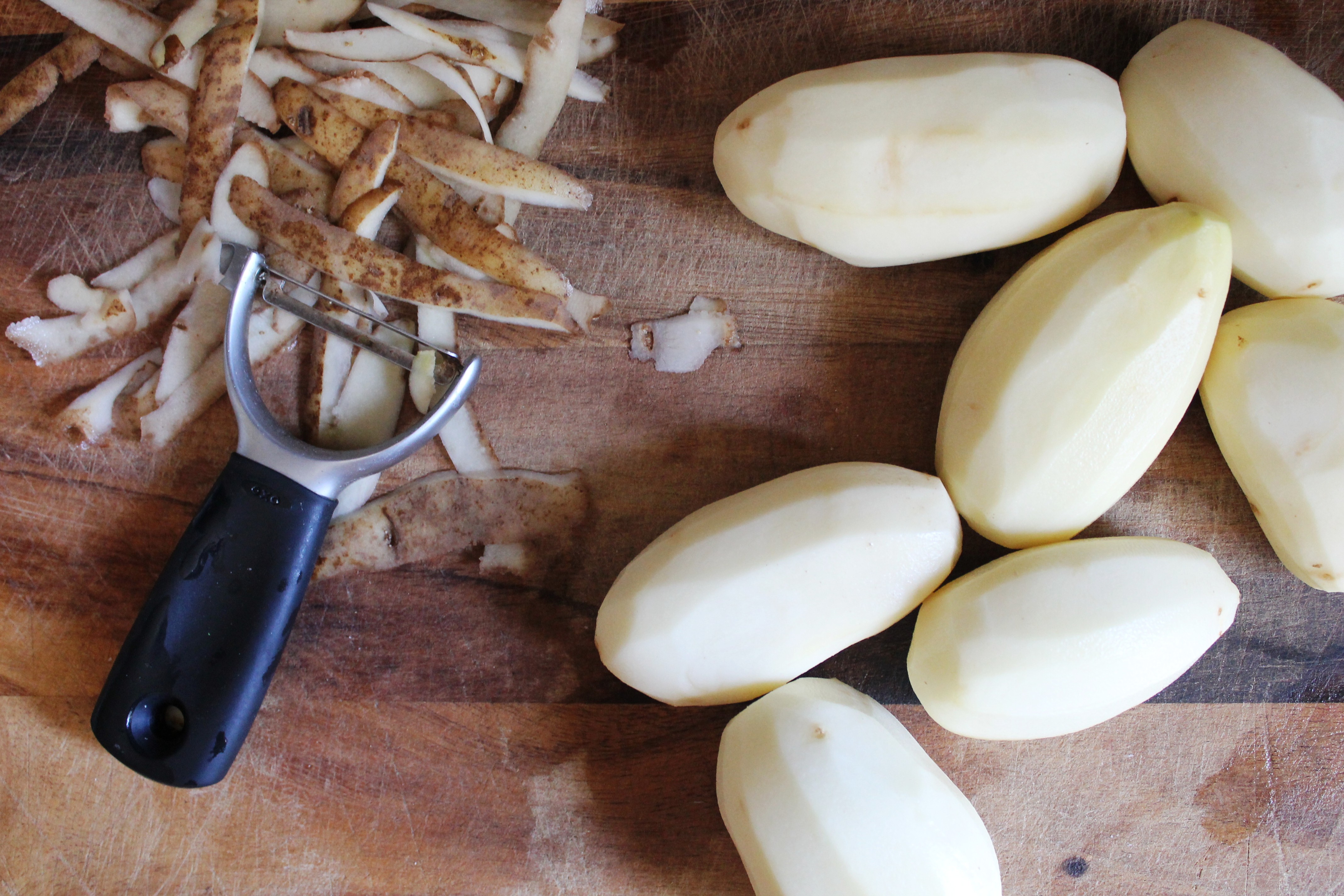 If the beautifully succinct ingredient list isn’t enough to pique your interest, the slightly adapted preparation technique absolutely will. Traditionally, you slice and boil the potatoes until fork tender, then add them to the baking dish with cream, seasoning and shredded cheese and bake it into a golden, bubbling dish of heaven. This recipe, in a stroke of inspired genius, calls for the potatoes to be simmered IN the cream. Take a moment, breathe, let’s move along…
If the beautifully succinct ingredient list isn’t enough to pique your interest, the slightly adapted preparation technique absolutely will. Traditionally, you slice and boil the potatoes until fork tender, then add them to the baking dish with cream, seasoning and shredded cheese and bake it into a golden, bubbling dish of heaven. This recipe, in a stroke of inspired genius, calls for the potatoes to be simmered IN the cream. Take a moment, breathe, let’s move along…
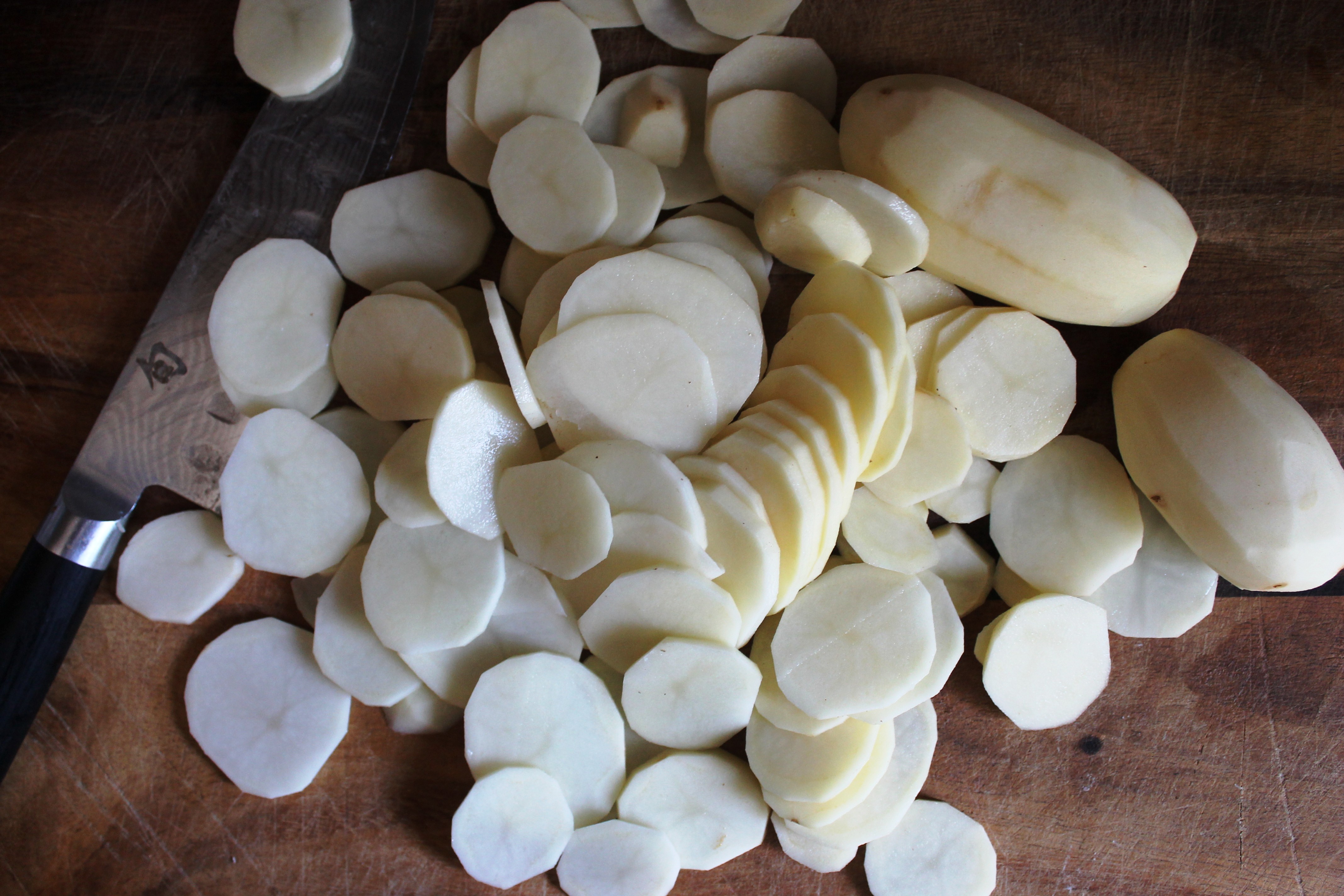 This infuses the potatoes with a richness to which mere water can only aspire. Additionally, it extracts some of those lovely potato starches into the cream, making it velvety and thick. Willan suggests that you strain the potatoes after this step and reserve that “potato cream” to use as a base for soup (simultaneously a fabulous idea and a minor sacrilege), then simmer the potatoes a second time in fresh cream. This seemed excessive and fussy, plus we couldn’t imagine leaving that extra luscious cream out of the gratin, so in the tradition of the simple, rustic cooking usually extolled in the book, that extra step went adieu. We simply tacked some additional cooking time onto that initial simmer and all was well.
This infuses the potatoes with a richness to which mere water can only aspire. Additionally, it extracts some of those lovely potato starches into the cream, making it velvety and thick. Willan suggests that you strain the potatoes after this step and reserve that “potato cream” to use as a base for soup (simultaneously a fabulous idea and a minor sacrilege), then simmer the potatoes a second time in fresh cream. This seemed excessive and fussy, plus we couldn’t imagine leaving that extra luscious cream out of the gratin, so in the tradition of the simple, rustic cooking usually extolled in the book, that extra step went adieu. We simply tacked some additional cooking time onto that initial simmer and all was well.
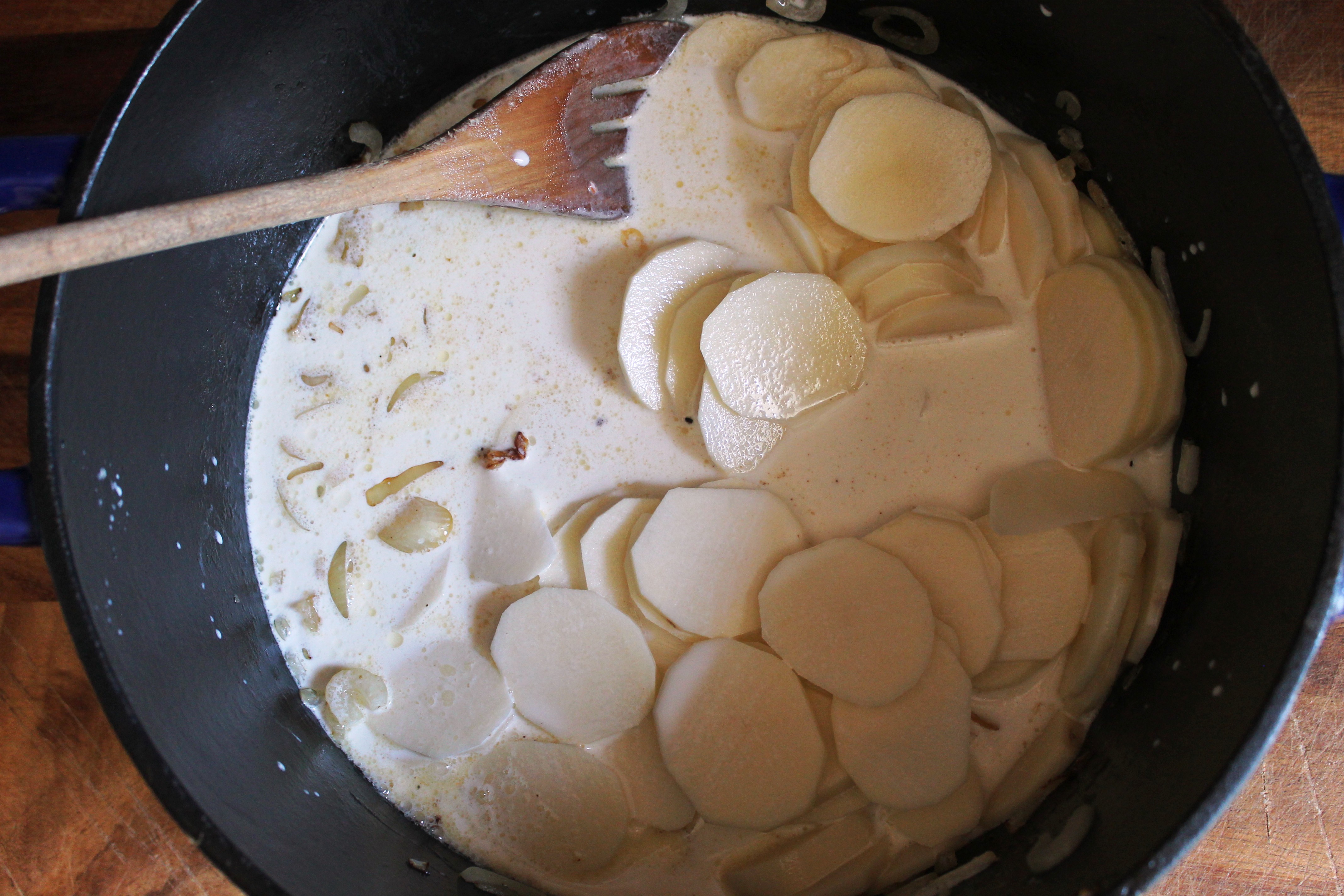 As happens on occasion, there was a misreading of the instructions, and instead of cutting the potatoes into 1/4 inch slices, they ended up as 1/8 inch slices. As a result of this happy accident, the “inimitable, melting softness” of the potatoes (as Willan so accurately describes it) is magnified to brilliant result. During the simmer, the potatoes and dairy meld into a creamy, dreamy fondue-like concoction, all before any actual cheese is added to the dish. That, boys and girls, is pure culinary alchemy.
As happens on occasion, there was a misreading of the instructions, and instead of cutting the potatoes into 1/4 inch slices, they ended up as 1/8 inch slices. As a result of this happy accident, the “inimitable, melting softness” of the potatoes (as Willan so accurately describes it) is magnified to brilliant result. During the simmer, the potatoes and dairy meld into a creamy, dreamy fondue-like concoction, all before any actual cheese is added to the dish. That, boys and girls, is pure culinary alchemy.
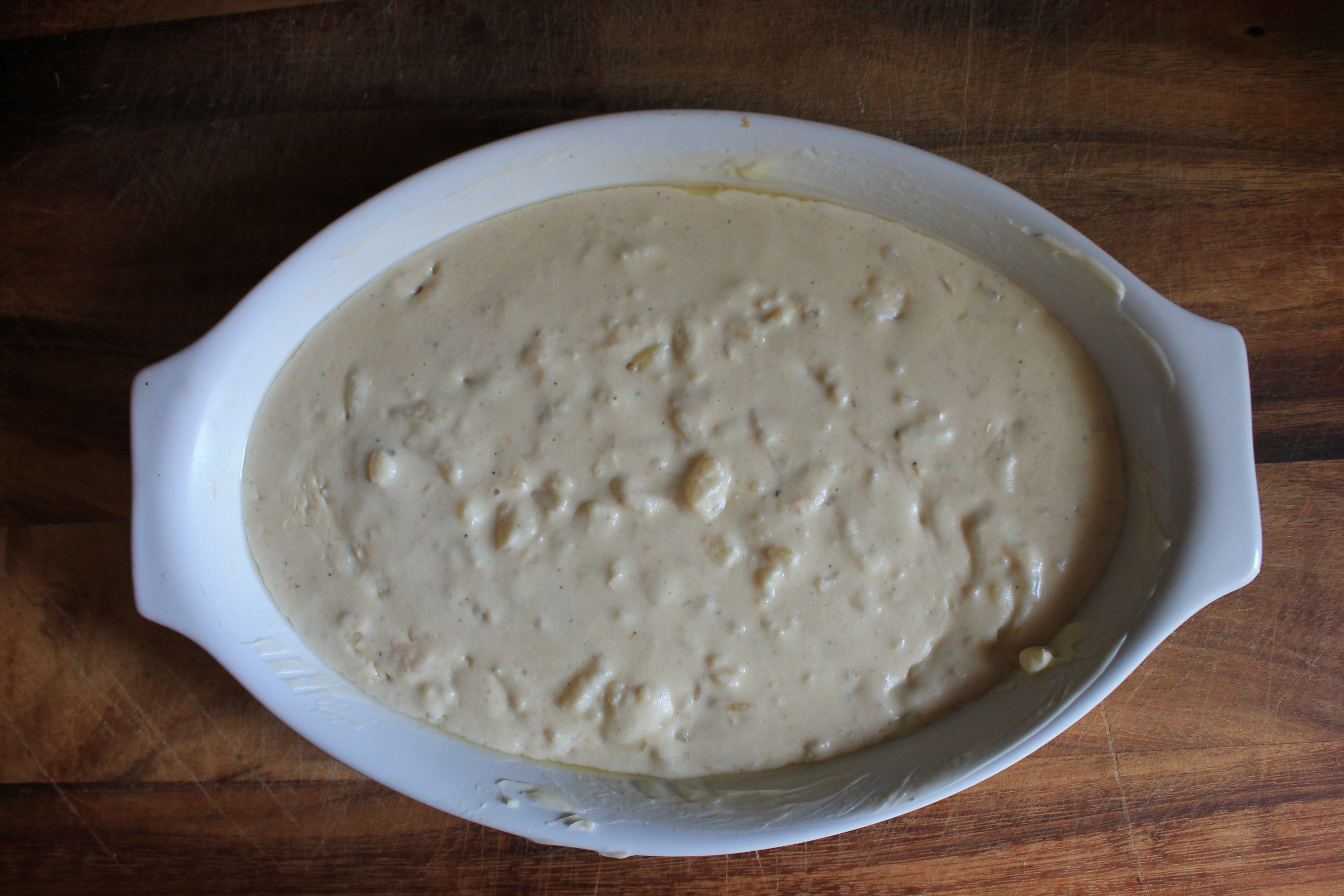 The end result had a little less structure than a traditional gratin, bearing a closer resemblance to the inside of a twice baked potato, but it was so divine and creamy that it just might be the default preparation from this point on. The only other adjustment to the recipe was to add in an onion that had been sliced thin and sautéed in a bit of butter. The amount of flavor that this added to the final dish is a true testament to the power of a single, humble, perfectly prepared ingredient and the real virtue of simple cooking.
The end result had a little less structure than a traditional gratin, bearing a closer resemblance to the inside of a twice baked potato, but it was so divine and creamy that it just might be the default preparation from this point on. The only other adjustment to the recipe was to add in an onion that had been sliced thin and sautéed in a bit of butter. The amount of flavor that this added to the final dish is a true testament to the power of a single, humble, perfectly prepared ingredient and the real virtue of simple cooking.
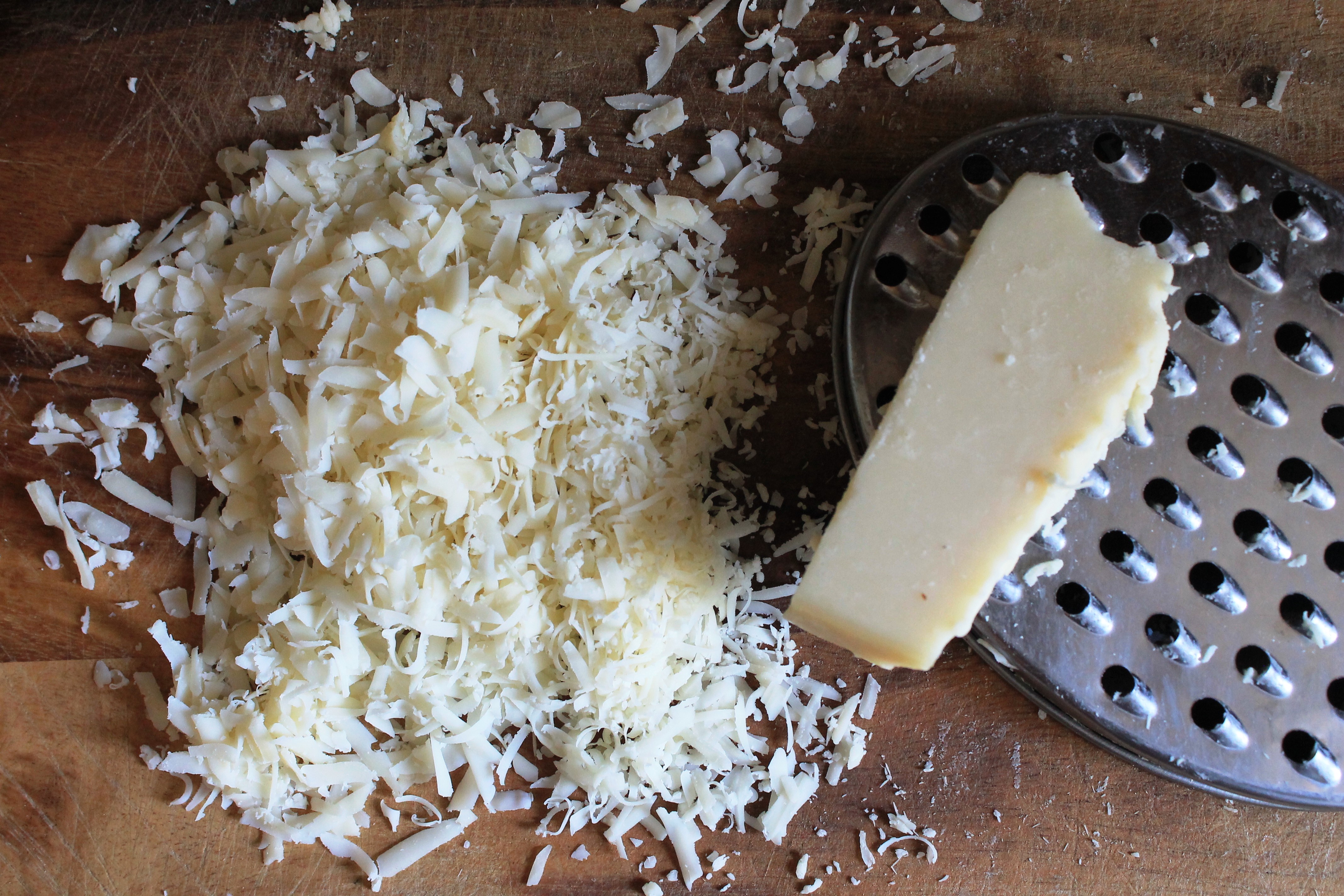
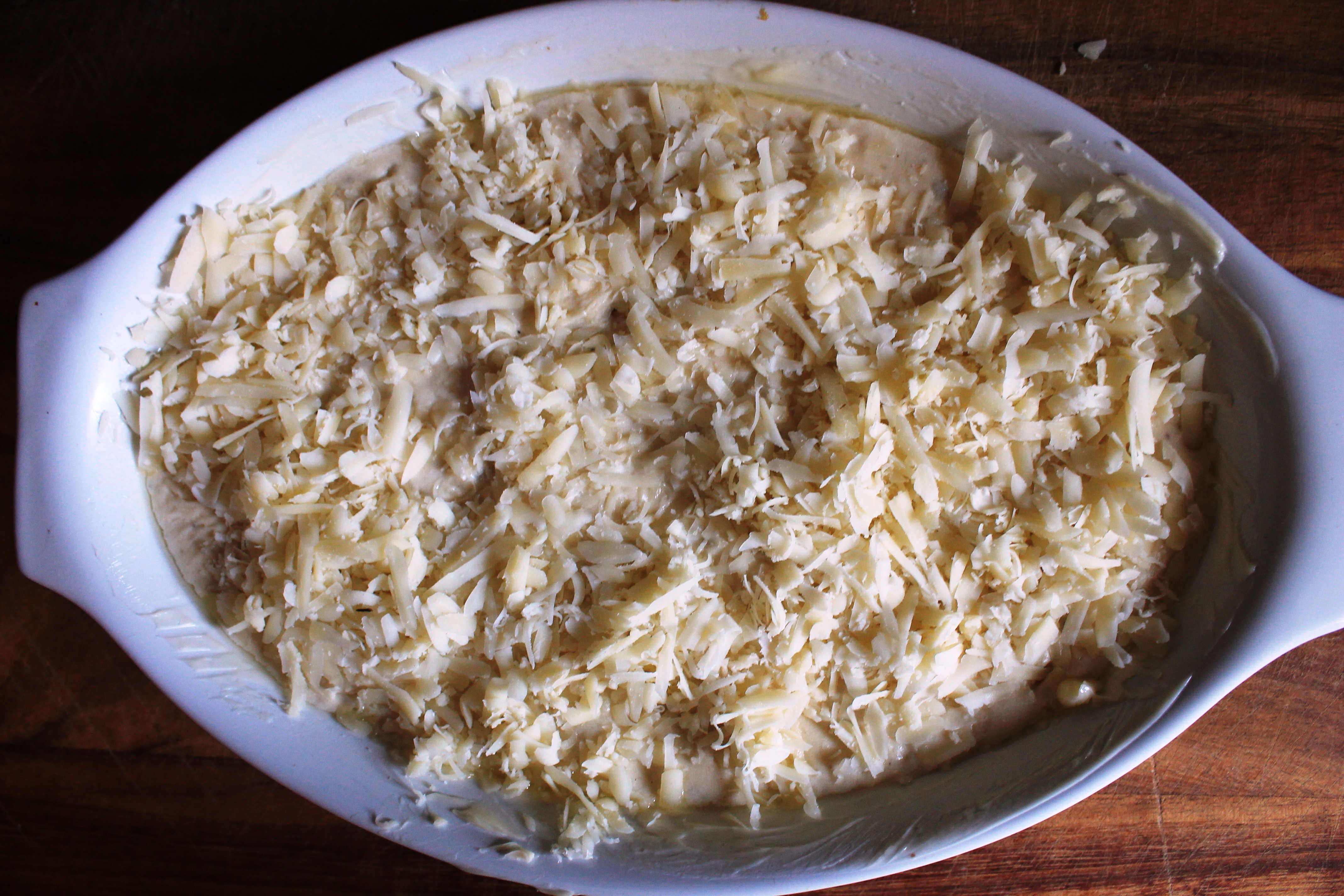 Aside from being gluten free and vegetarian, this is a perfect make ahead dish. Just prepare the potatoes and cream, place them in a baking dish, then cover and refrigerate for a day or two. All you need to do from that point is top it with shredded gruyere and bake according to the directions. You can actually pop it in the oven for 5-10 minutes without the cheese to take the chill off of it first, but after that, it is game on. Top it with cheese and continue baking until it is golden and bubbling.
Aside from being gluten free and vegetarian, this is a perfect make ahead dish. Just prepare the potatoes and cream, place them in a baking dish, then cover and refrigerate for a day or two. All you need to do from that point is top it with shredded gruyere and bake according to the directions. You can actually pop it in the oven for 5-10 minutes without the cheese to take the chill off of it first, but after that, it is game on. Top it with cheese and continue baking until it is golden and bubbling.
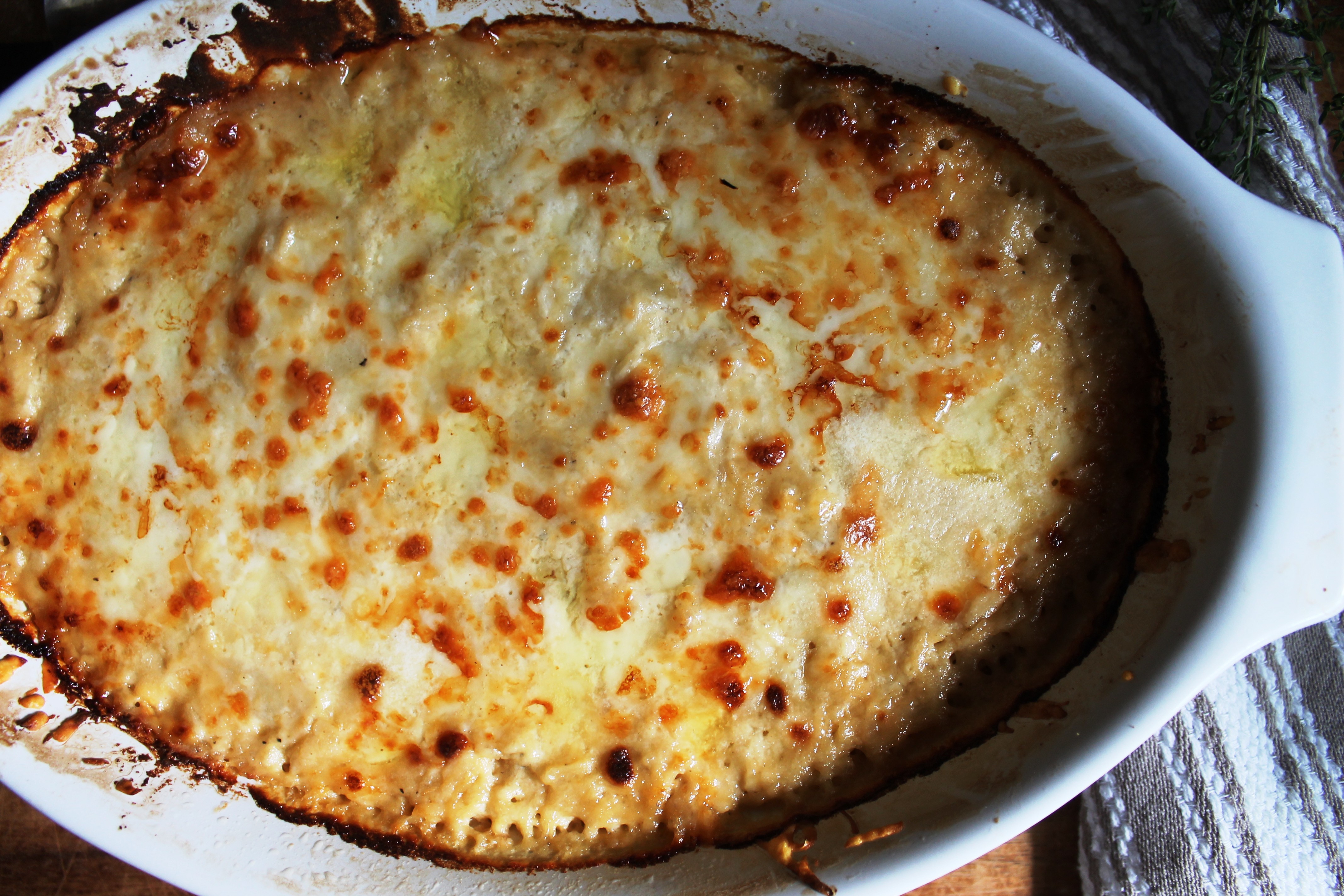 We’re going to go out on a very sturdy limb and say that this is a foolproof crowd pleaser and remind you *hint hint* that it’s never too early to start planning your Thanksgiving menu. This has been a holiday-themed, preemptive Public Service Announcement from your friends here at Allons-Eat! Enjoy!
We’re going to go out on a very sturdy limb and say that this is a foolproof crowd pleaser and remind you *hint hint* that it’s never too early to start planning your Thanksgiving menu. This has been a holiday-themed, preemptive Public Service Announcement from your friends here at Allons-Eat! Enjoy!
Adapted from The Country Cooking of France.
- 1 tablespoon butter, plus more for coating baking dish
- 1 medium yellow onion, peeled and thinly sliced
- Salt and pepper to taste
- 2 pounds baking potatoes, peeled and sliced ⅛-inch thick
- 3 cups half and half
- pinch of freshly grated nutmeg
- ¾ cup grated Gruyere cheese
- Heat butter in a large pot over medium heat. Add onion, season with salt and pepper, and cook, stirring occasionally, until soft and beginning to brown, about 5 to 7 minutes.
- Add potatoes and half and half. Season with more salt, pepper and a pinch of nutmeg. Increase heat to medium-high and bring mixture to a boil. Reduce heat to low and simmer, stirring often to prevent sticking, for 25 to 30 minutes, until potatoes are very tender.
- Butter the baking dish. Spread the potato mixture, which will be quite sloppy, in the prepared dish. Sprinkle the top with the cheese. Gratin Dauphinois may be prepared ahead and stored in the refrigerator for up to 2 days before continuing.
- To finish, heat the oven to 375 degrees F. Bake the gratin until piping hot through and browned on top, 25 to 30 minutes (less if you aren’t heating the dish from the refrigerator). Serve piping hot.
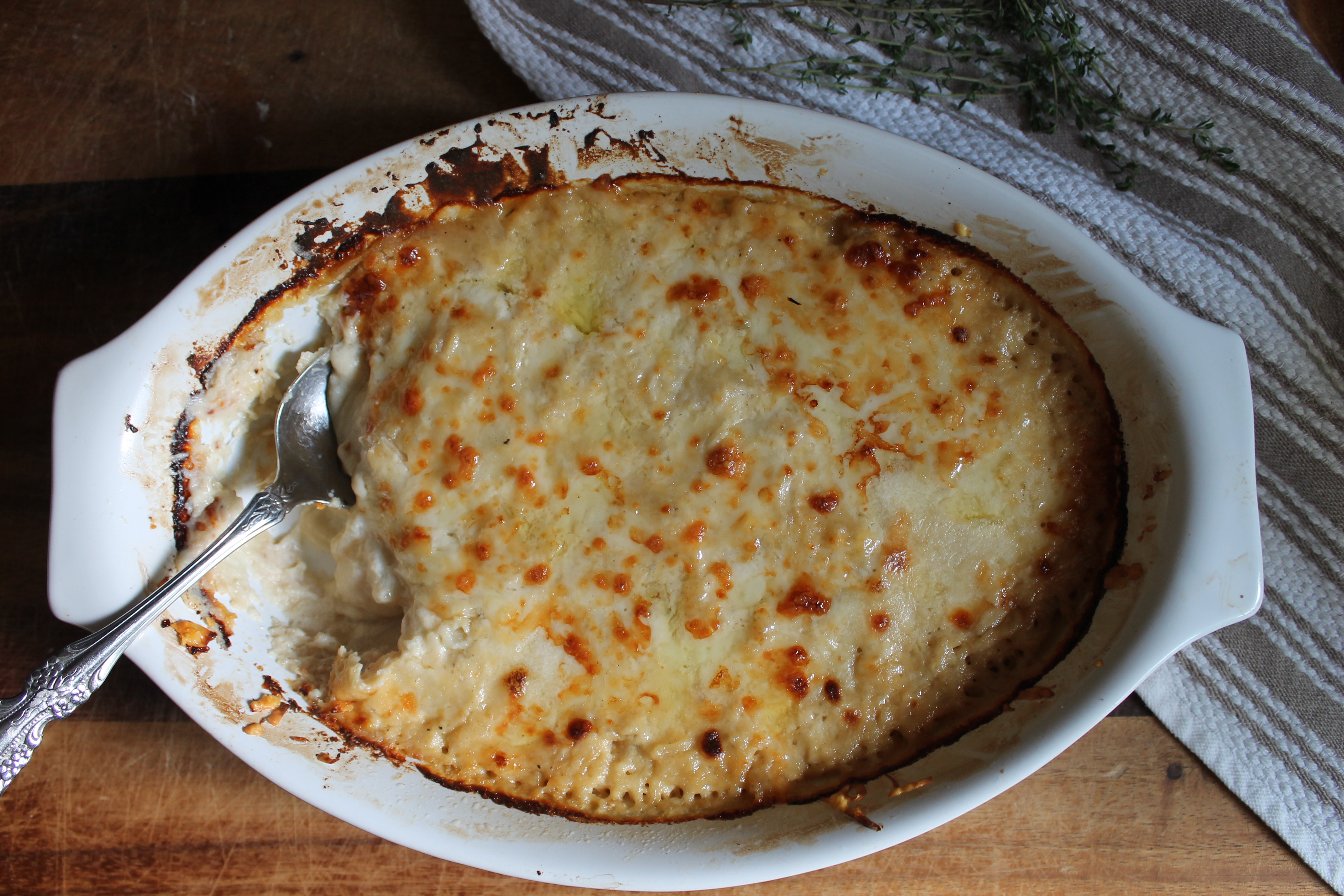
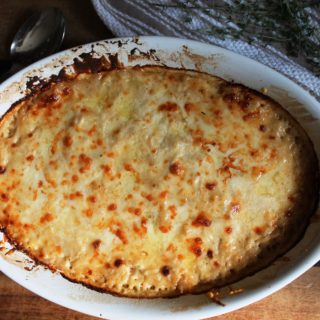
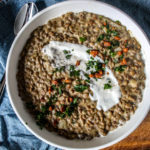




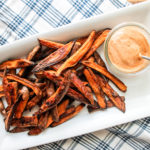
Leave a Reply